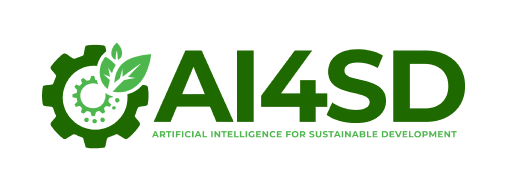The Artificial Intelligence For Sustainable Development (AI4SD) project has launched the Smart Indigenous Weather App to help farmers improve crop planning and yield through more accurate weather predictions.
The app, developed with funding from the French Embassy in Ghana with support from the Foreign, Commonwealth and Development Office (FCDO) and the International Development Research Centre (IDRC), was launched at Kwabeng in the Eastern Region.
The app aims to support the United Nations Sustainable Development Goal (SDG) 2, Zero Hunger, by equipping local farmers with the tools needed to make informed decisions amid changing climate conditions.

The Smart Indigenous Weather App
Speaking at the launch, Prof. Jerry John Kponyo, the AI4SD project lead, said farmers often rely on trial and error when deciding planting periods.
“With the availability of data and AI, we can now develop intelligent ways to predict weather accurately. What makes this app unique is its integration of digitalized indigenous knowledge gathered from farmers over time. As a result of that, the accuracy is much better than existing ones. This particular app is homegrown and locally made,” he said.

Prof. Jerry John Kponyo, AI4SD project lead
Prof. Kponyo officially declared the Smart Indigenous Weather App duly launched, marking a significant milestone in AI4SD’s efforts to support smallholder farmers.

The AI4SD project lead launched the app at Kwabeng
The app incorporates local forecasting methods with scientific data, enhancing prediction accuracy.
Farmers contribute to the process by logging traditional indicators such as cloud types and wind behavior.
These inputs, along with scientific models, are used to generate localized weather forecasts.
AI in Agriculture theme lead, Dr. Eric Tutu Tchao, gave an overview of the app’s functionality, while Rev. Dr. Prince Odame moderated the event.

A photograph of the AI4SD Team with some stakeholders
The Smart Indigenous Weather App builds on lessons from a previous 2023 pilot and now includes new features such as audio guidance in a local language to improve accessibility.
Dr. Enoch Bessah, a member of the AI in Agriculture theme, said, “The integration of visual and audio features makes it more user-friendly. We also included detailed indicator descriptions to support better data collection.”

Dr. Enoch Bessah trained farmers on how to read and interpret the rain gauge accurately
Rain gauges have been installed in three districts across three regions to help validate predictions.
Farmers were trained by the AI in Agriculture team on how to record and report rainfall data accurately.

Mr. Esmond Adjei educating farmers about the app
The training was led by Mr. Esmond Adjei, Mr. Eli Bansah, Dr. Enoch Bessah, and Dr. Caleb Ocansey.
According to Dr. Enoch Bessah, “These gauges have been calibrated at the KNUST weather station to ensure they meet standards.”

Installation of the rain gauge in some selected districts
He emphasized the need for data collaboration and called on telecom companies to support the initiative by providing farmers with mobile data to transmit their readings in real time.
Samuel Owusu Ansah, head of the Hydro-Meteorological Unit at the Ghana Meteorological Agency, said the integration of scientific and indigenous knowledge was a significant step forward.

Samuel Owusu Ansah, head of the Hydro-Meteorological Unit at the Ghana Meteorological Agency
“This app will help us bring weather information to the grassroots level. It aligns with our efforts to expand our services to every part of the country,” he added.
Kingsley Ankoh, a representative from the National Communications Authority (NCA), also endorsed the app.

Kingsley Ankoh, a representative from the National Communications Authority (NCA)
The Smart Indigenous Weather App will soon be available on the Apple App Store, with plans to expand to other regions and incorporate additional local languages in future updates.



